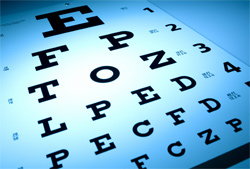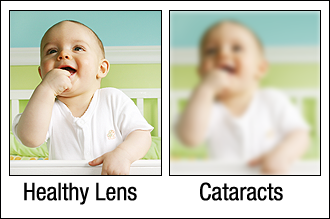How is a Cataract Detected?

To detect a cataract, your eye care professional will examine the lenses of your eyes.
A comprehensive eye exam usually includes:
- Visual acuity test: The Snellen eye chart is used to measure how well you see at various distances.
- Pupil dilation: The pupil is widened with eye drops to allow your doctor to see more of the lens and retina and look for other eye problems.
Dr. McMickle may also perform other tests to learn more about the structure and health of your eyes.
How are Cataracts Treated?
 For an early cataract, vision may improve by using different eyeglasses, magnifying lenses, or stronger lighting. If these measures do not help, surgery is the only effective treatment. This treatment involves removing the cloudy lens and replacing it with a substitute lens.
For an early cataract, vision may improve by using different eyeglasses, magnifying lenses, or stronger lighting. If these measures do not help, surgery is the only effective treatment. This treatment involves removing the cloudy lens and replacing it with a substitute lens.
A cataract needs to be removed only when vision loss interferes with your everyday activities, such as driving, reading, or watching television. If you are currently under the care of an optometrist or other eye care professional, he or she will help you determine when your cataract(s) should be removed. If you decide to proceed with cataract surgery, your current eye care provider will refer you to an ophthalmologist with special training in cataract surgery, like Dr. McMickle, to remove the cataract. If you have cataracts in both eyes, Dr. McMickle will not remove them both at the same time. You will need to have each done separately.
Sometimes, a cataract should be removed even if it doesn’t cause problems with your vision. For example, a cataract should be removed it if prevents examination or treatment of another eye problem. Such as age-related macular degeneration or diabetic retinopathy.
Is Cataract Surgery Effective?
Cataract removal is one of the most common operations performed in the U.S. today. It is also one of the safest and most effective. In about 90% of the cases, people who have cataract surgery have better vision afterward.

